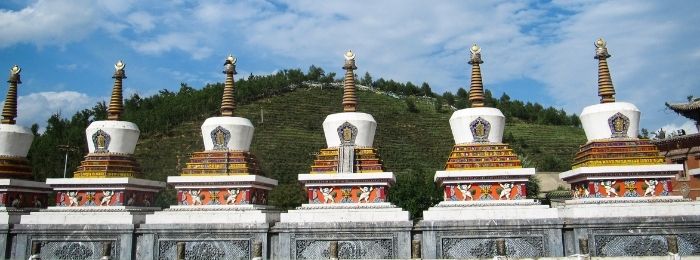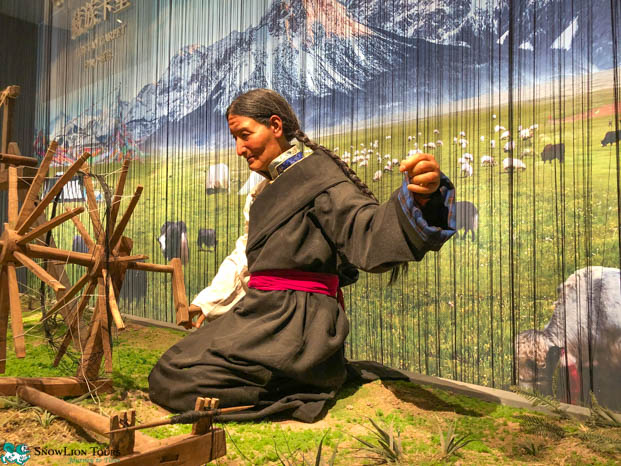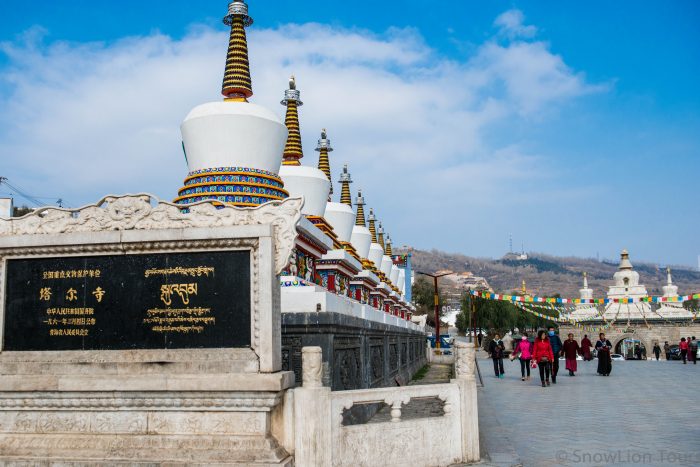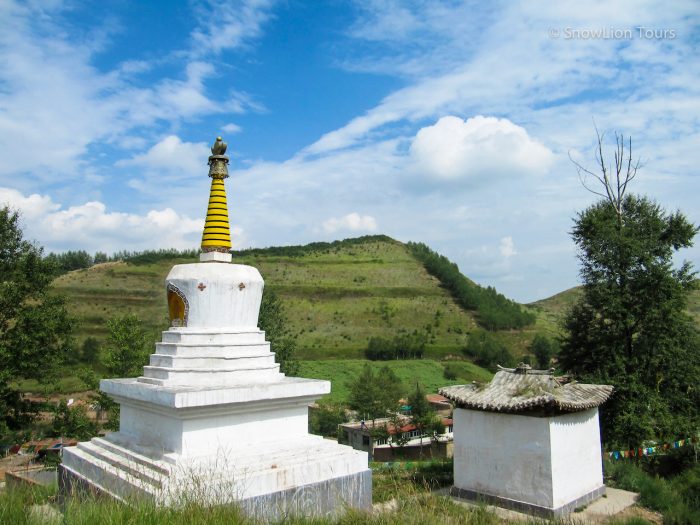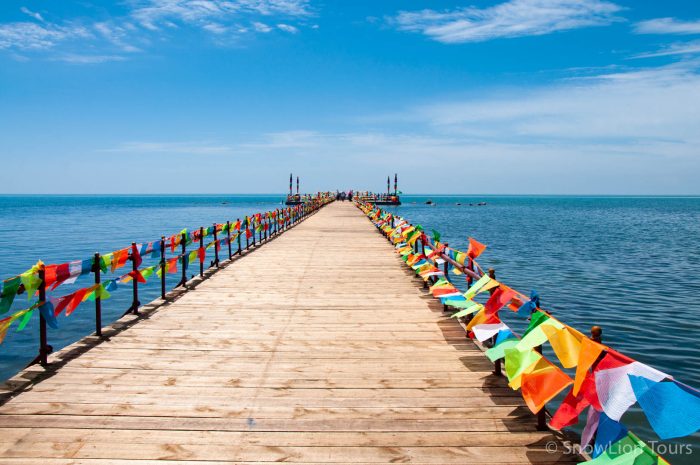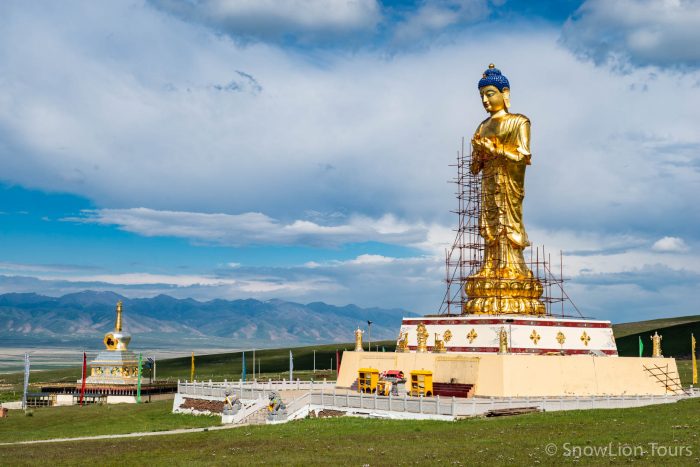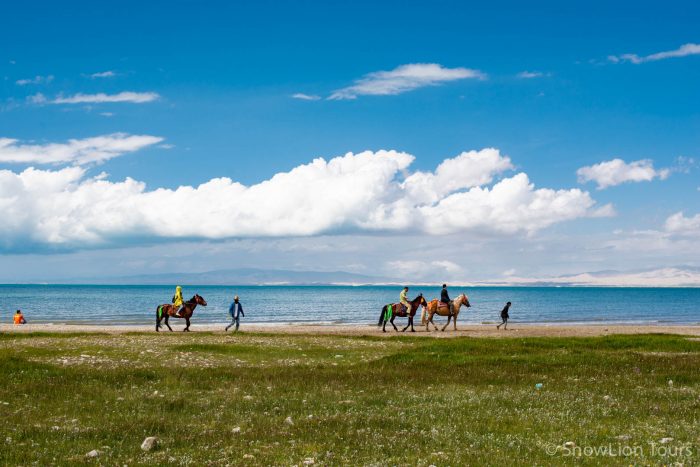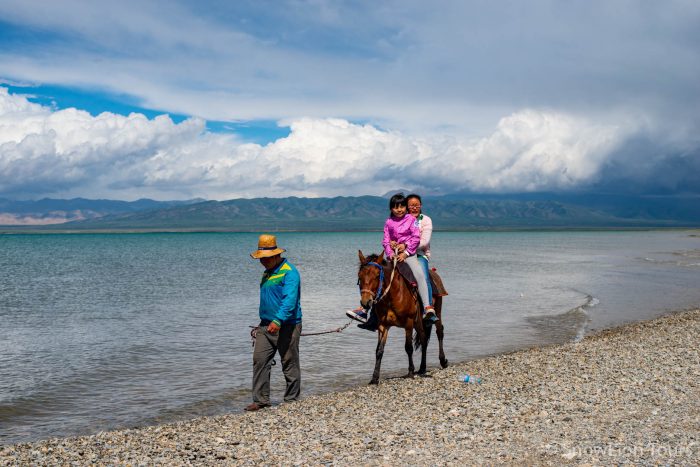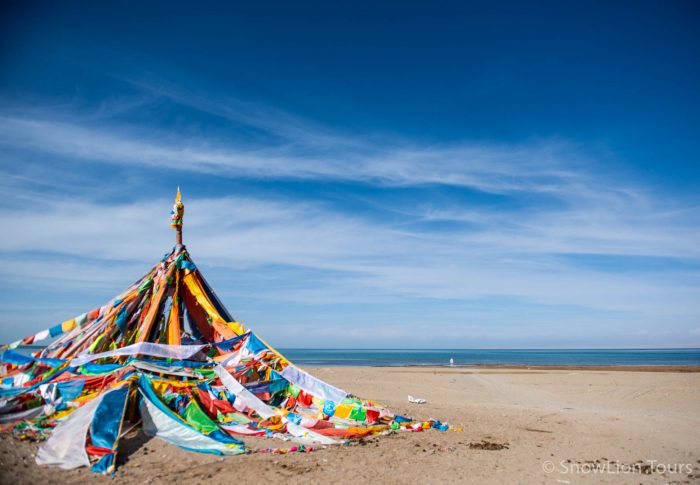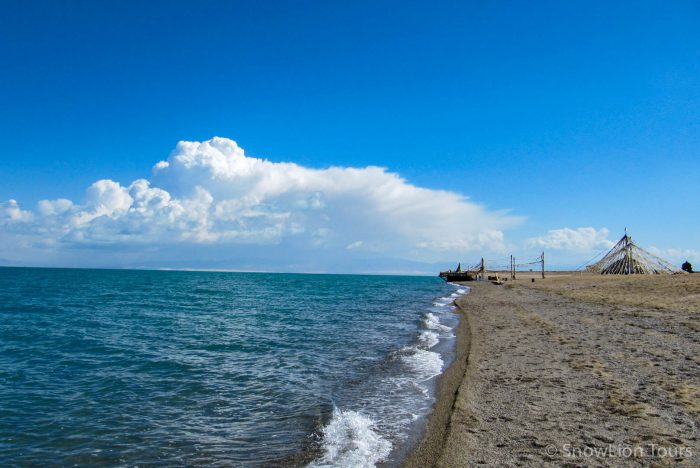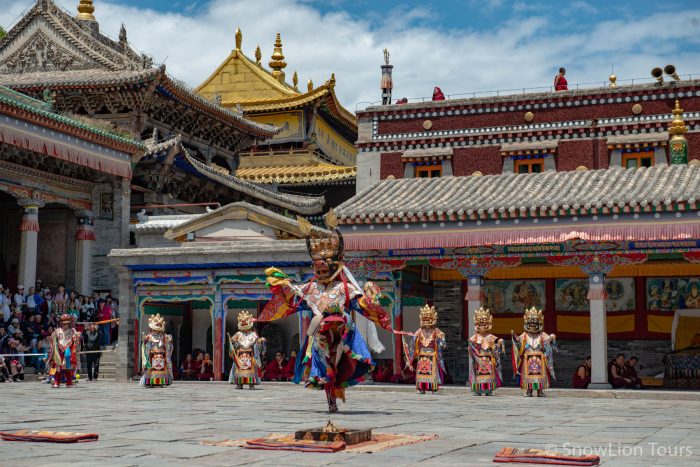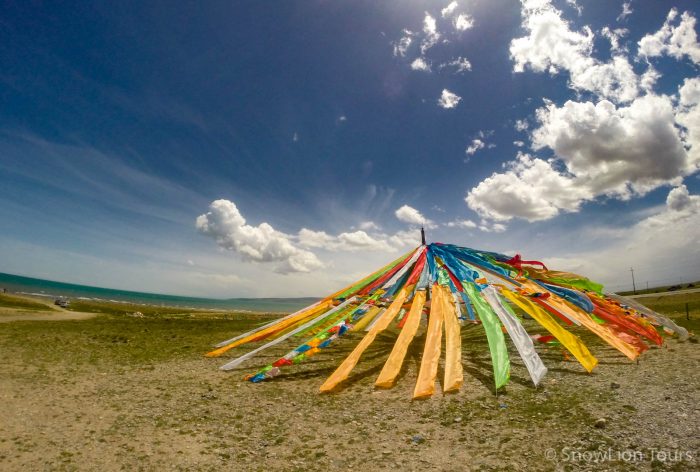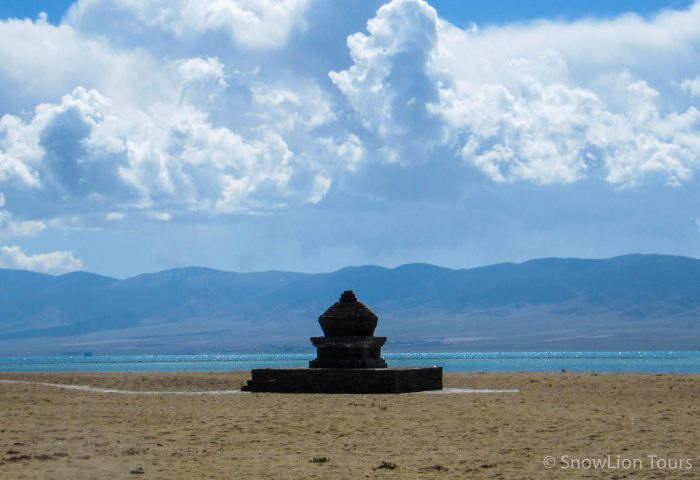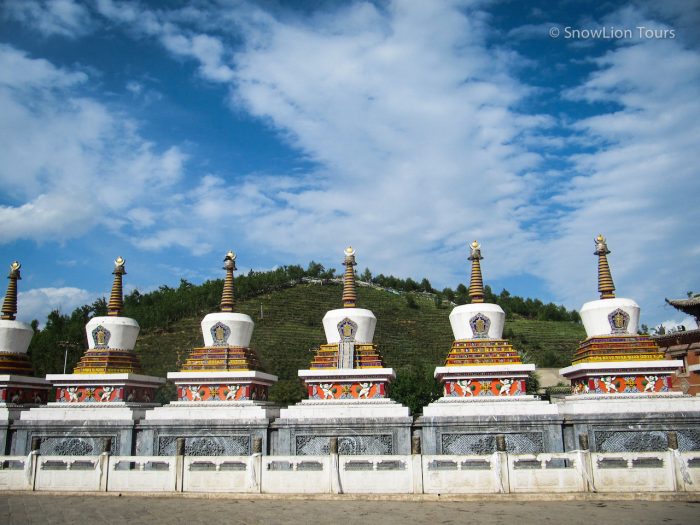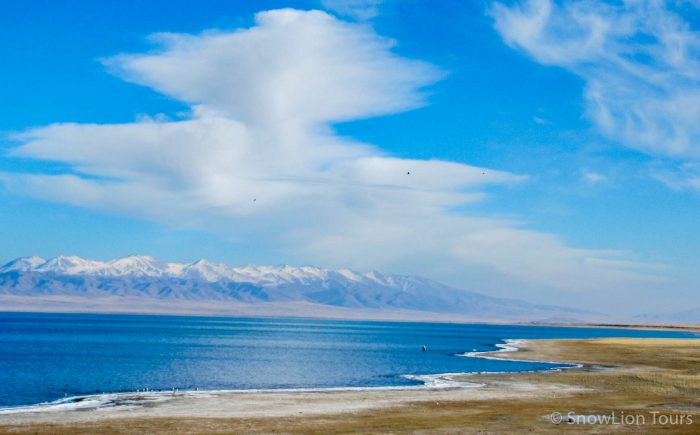Day 1: Xining – Tibetan Medical and Cultural Museum – Kumbum Monastery – Xining
In the morning, we will take you to Xining’s northern suburbs to visit Tibetan Medical and Cultural Museum. It is regarded as the largest and the most authentic Tibetan museum in the world. The museum consists of two buildings. The first hall is referred to as the Tibetan traditional medical hall with a large display of ancient medical instruments, medicine scriptures, herbal specimen, and exposition of famous figures who made a significant contribution to Tibetan traditional medicine.

Our clients are fascinating about the Tibetan traditional paintings.
The second hall is the Tibetan culture hall that includes the world’s biggest thangka painting depicting a great number of Buddhas, Bodhisattvas, protector deities, as well as the thangkas of great Buddhist masters of the past. There are also several expositions of the Tibetan traditional dress from all areas of Tibet, which includes various wedding dresses, monastic robes, and religious costumes. Visiting further, we will see a unique exposition on the geography of the Tibetan Plateau, which represents wildlife, trading routes, sacred places, ancient Tibetan armours and jewellery.
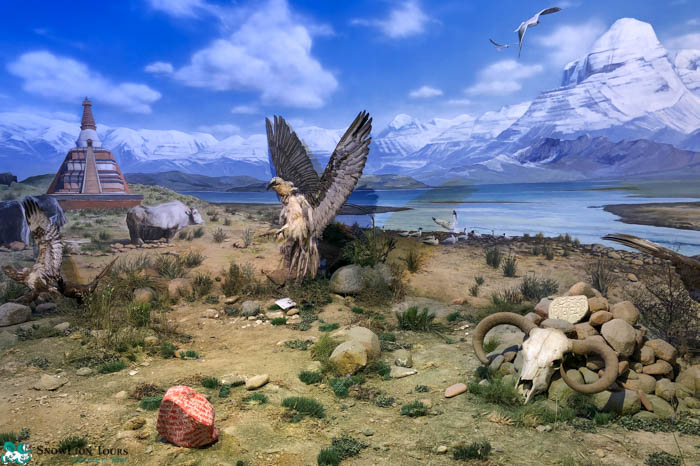
landscape in western Tibet.
Tibetan Medical and Cultural Museum is one of the best places to begin your Tibet journey, for it offers a comprehensive overview of Tibetan culture, religion and history. Afterwards, we will drive to Kumbum Monastery, which lies inside a lotus-shaped mountain about 25 km west of Xining.
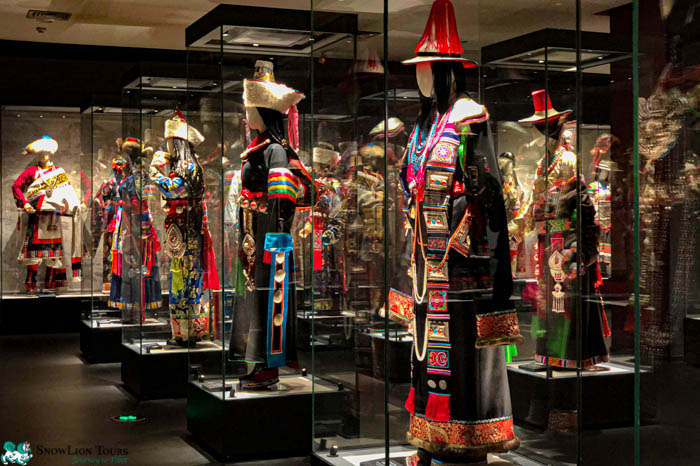
Tibetan traditional dresses displayed in the museum.
Kumbum Monastery, also known as Ta’er monastery in Chinese, is the largest monastic college in Qinghai province. It is home to many famous figures in Tibet, including Je Tsongkhapa, the founder of the Gelug tradition of Tibetan Buddhism. It will take us two to three hours to visit all the temples inside. If you are interested in monastic education, you can also see the monastic debate session in the afternoon. Tibetan Buddhist debate is a form of argumentation through which Tibetan monks learn philosophical doctrine. It is widely used in Tibetan education to sharpen analytical capacities and convey philosophical concepts. Afterwards, we will drive back to Xining.
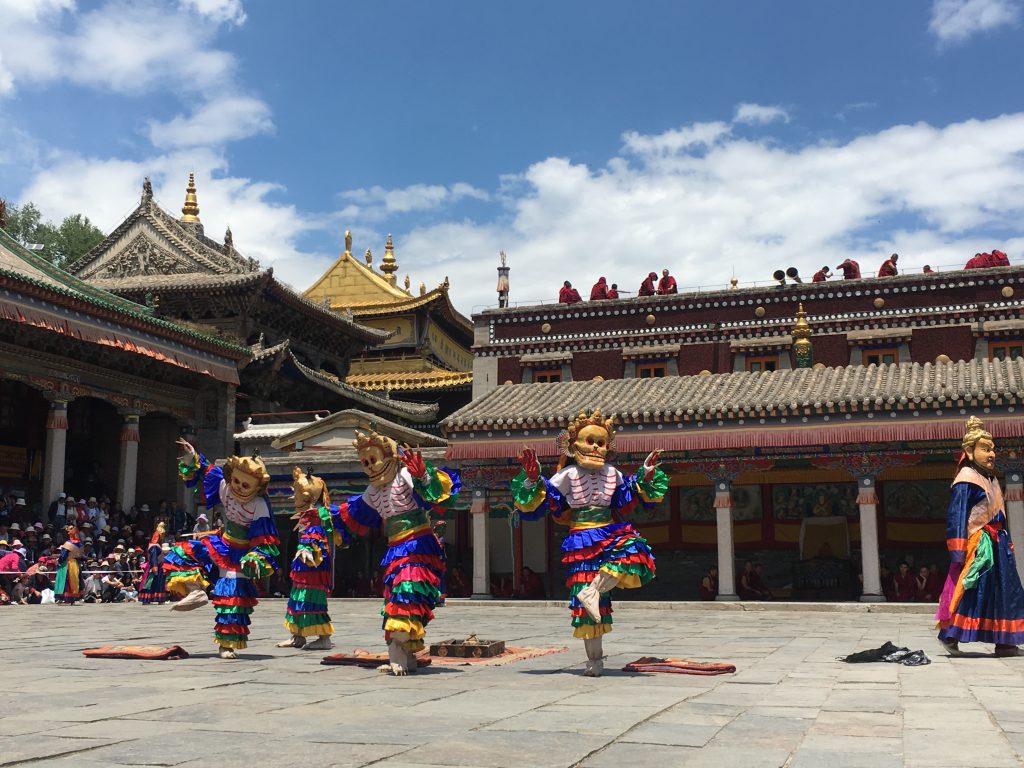
Day 2: Xining – Dzongkha Lhatse Pass – Qinghai Lake – Xining: 350km
Our day starts by taking a small scenic road ascending about 800 meters to reach the first mountain stop called Dongkar Latse or Dzongkha Lhatse. Traditionally, this place was to make offerings to mountain gods and protector deities. We will also stop here to enjoy a beautiful 360-degree view of the mountains around. If you wish to, you can hang prayer flags for the good luck and well-being of yourself and others. Then we will continue driving through nomadic areas to Qinghai Lake. Qinghai Lake or Kokonor lake is the largest lake on the Tibetan plateau and the largest salt lake in China. Here, we will have the opportunity to take a boat trip or to ride a horse. Alternatively, we can just take a casual walk on the shore to enjoy the beauty this lake has to offer. In July and August, the shore is covered by yellow rapeseed flowers providing amazing scenery for gorgeous photographs. In the evening, we will drive back to Xining via a different route.
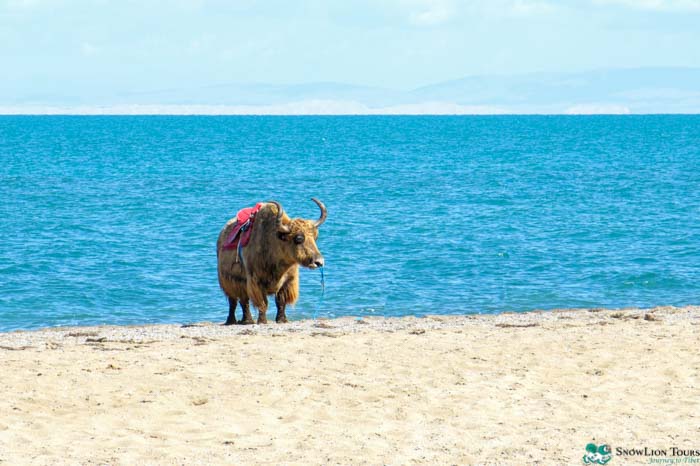
A yak to take photos at the Qinghai Lake.




